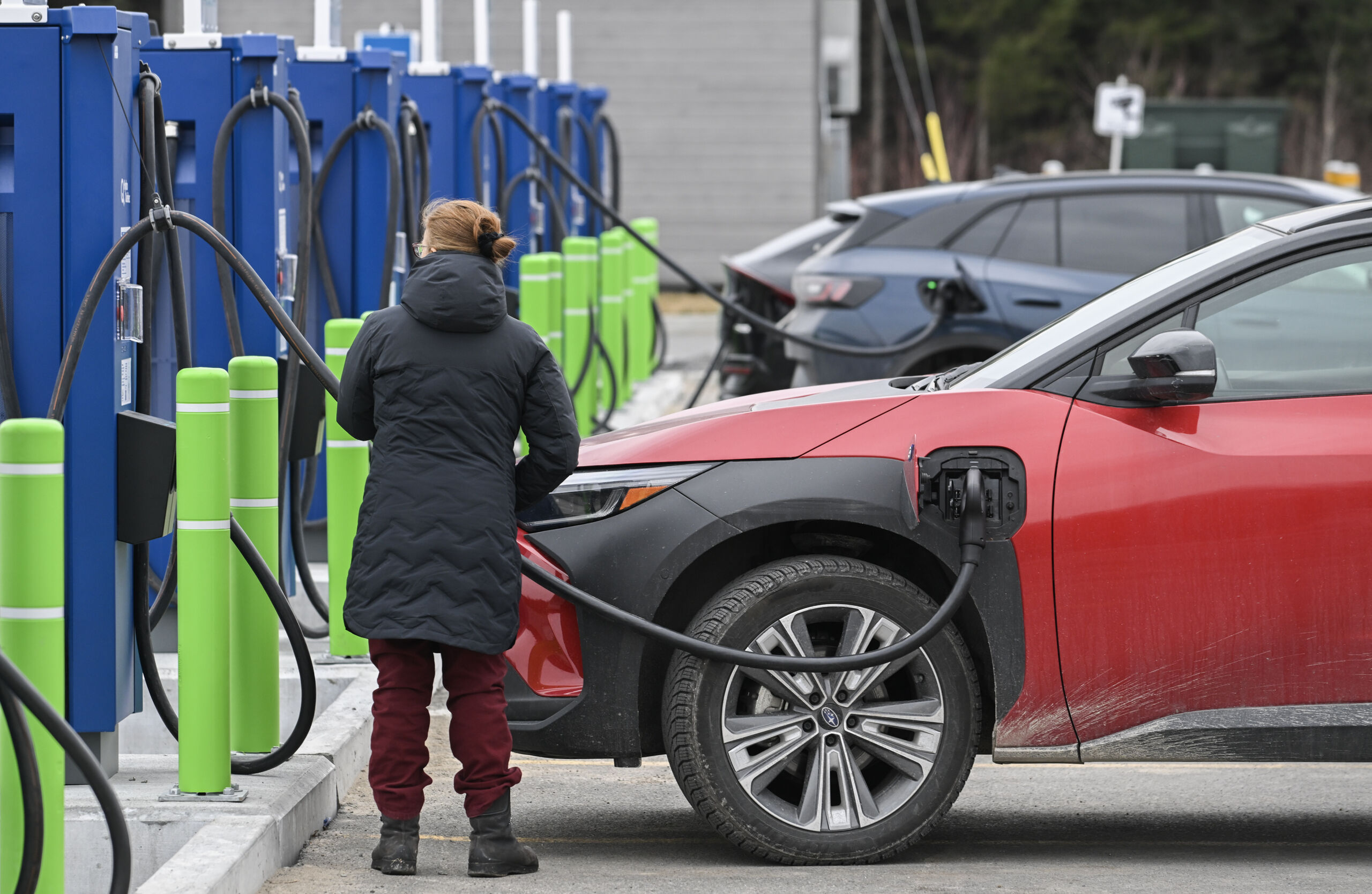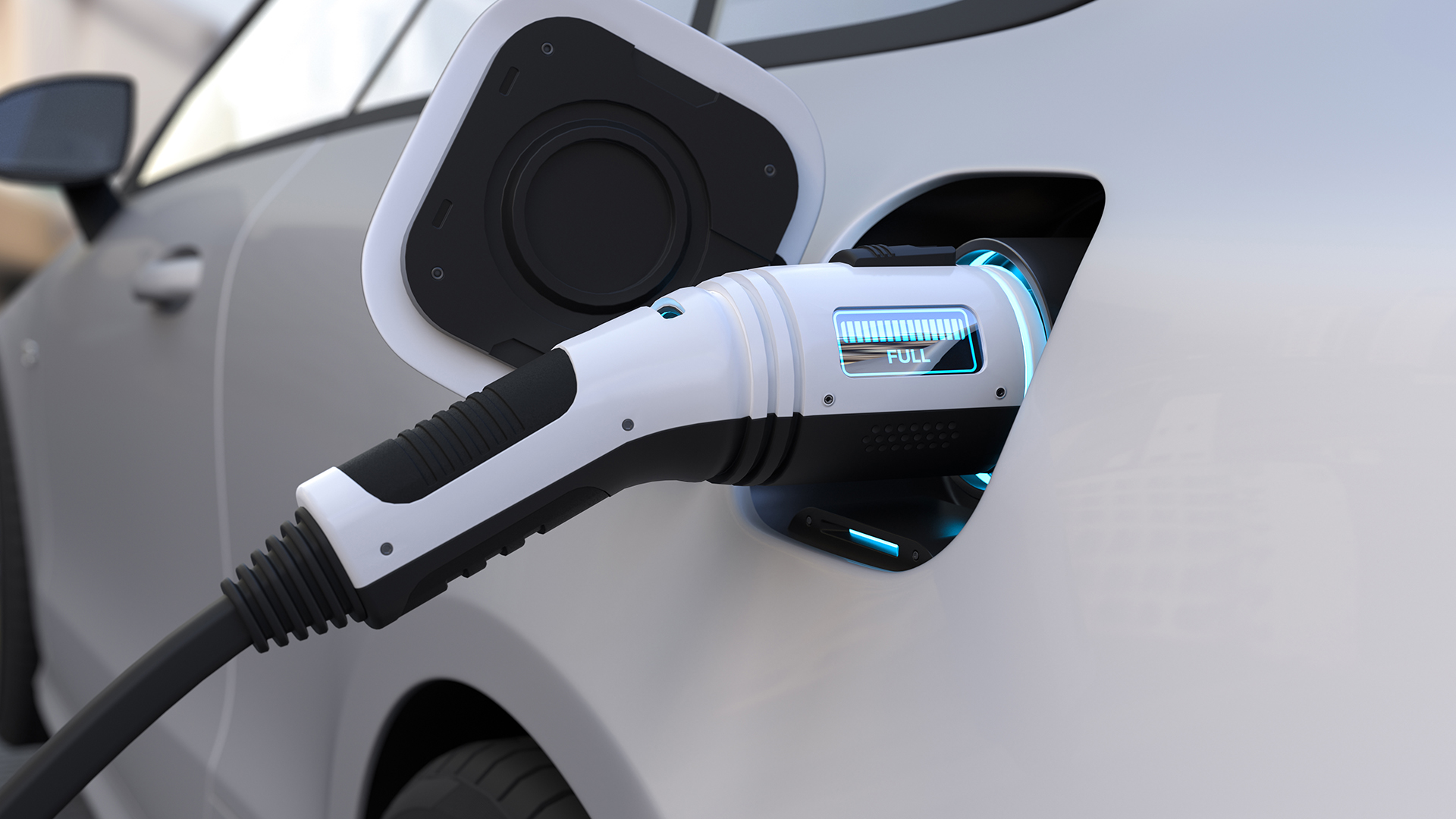
Don't be a bad charging neighbor.
Graham Hughes/Bloomberg via Getty Images
Modern life can be fraught with confusion. Should I answer my cellphone in a crowded place? (No.) Where do I stand on an escalator? (On the right—let people walk on the left.) And what are the social rules when it comes to recharging my electric vehicle? Thankfully, that last question has now been addressed by Debrett's, a British publisher with a name now synonymous with etiquette, in the recently published 2024 edition of "A-Z of Modern Manners."
Debrett's has been publishing guides on manners and etiquette since the last time electric vehicles were a thing, but it first put together a list of dos and do-nots for EV drivers last year as a standalone guide with British car brand Vauxhall. Now, it has added the advice to this year's edition of the general etiquette guide.
Although Debrett's is writing for a UK audience, with its ingrained ideas about class structure, the advice also applies to this side of the Atlantic, and it's probably timely now that Tesla is opening up its Supercharger network to non-Tesla EVs. Here is some of the advice.
Don’t cut in line
As EV adoption grows, particularly in places like California, some charging locations can generate demand that outstrips the number of charging plugs available. If every charger at a station is occupied, see if there's a queue you're supposed to join—being unaware and jumping in front of other drivers who have been waiting longer than you won't make a good impression.
If you find yourself waiting with other EV drivers, make small talk to pass the time. "If you establish a relationship with fellow motorists, they’re much more likely to be accommodating when it comes to negotiating charging time," the guide notes.
Debrett's also suggests you park neatly within the lines and don't straddle spaces. This may be less of a problem in the US, where we make our bays big, but remember that "no electric vehicle has special priority, whether that be a full EV or Plug-in Hybrid (PHEV)."
Know something about your EV
Being aware of your car's charging needs is important. For example, PHEV drivers have no need for DC fast chargers unless they are in a CHAdeMO-equipped Mitsubishi Outlander, so don't take your AC-only vehicle to a DC-only location.
And for EV drivers at DC fast chargers, you should know how long it takes your car to reach an 80 percent state of charge. After this point, an EV battery significantly restricts the amount of charge it draws, throttling back the charger in the process. Charging from 80 to 100 percent can take as long as 10 to 80 percent takes, so plan on leaving the public charger at that point unless absolutely necessary.
Be polite
While you shouldn't jump the queue, Debrett's says it's OK to discreetly check how long another car has left in its session. If you see it's almost done and that a driver is with that car, you can politely ask how much longer they're going to take. For example: "I hope you don’t mind me asking, but I notice you’re nearly fully charged. Would it be okay if I started to plug in soon?" And remember to be thankful if they say yes.
Don’t be bullied
Depending on where you are, there may be certain protections for EV charging spots that prohibit internal combustion engine-powered vehicles from "ICEing out" charging bays. Debrett's suggests checking street signs to familiarize yourself with any local peculiarities.
While there may be rules or regulations about only leaving your EV in a spot while it's charging or not ICEing out an EV charger, if the car in question is unattended, "in practice there is very little you can do when confronted by a selfish motorist, unless you catch them in the act of parking, when you can politely point out the sign."
You could leave a note
If you plan on leaving your car while it charges, you might want to leave a note in the window telling other drivers how long you'll be.
Should you find a charging spot occupied by a fully charged car, try to stay calm and don't unplug the other person's car in a fit of rage. "A careless move could harm the car or the charger, and you don’t want your understandable irritation to lead to you inflicting criminal damage," Debrett's points out.
Plan ahead
Most EV drivers will already know this one, especially if they have tried to road-trip. If you plan on charging while you're out and about, you can prepare yourself by looking up charging facilities in an app like PlugShare or A Better Route Planner.
These usually have some degree of crowdsourced ratings for charger reliability and allow you to enter the details of your EV and how much charge you want to have when you arrive in order to calculate which chargers to visit along the way.
Don’t be careless with cables
This advice is probably more germane to the UK and Europe, where street-side charging is much more common, although a number of US cities (like Los Angeles and Kansas City) have also deployed streetlamp AC chargers in recent years.
If you're charging on-street, be considerate and make sure you aren't breaking any local laws or regulations. And beware of creating a trip hazard—be like my Chevy Volt-owning neighbor and use a pedestrian cable protector so people on foot or bike aren't inconvenienced by your charging car.
Charging at a friend’s
If you're planning on plugging in at a friend's place, be polite about it. Don't assume you can just plug in when you arrive; instead, ask politely if it's OK to use their electricity and, if so, if they can direct you to the nearest suitable outlet.
Here in the US, that will almost certainly mean a 120 V outlet, so don't expect to charge quickly, or ask whether it's OK to disconnect their dryer so you can access the more powerful 240 V outlet. And if you think you've used a lot of their electricity, "it is a gracious gesture to leave a parting gift."
Be tidy
Finally, leave things as you wish to find them. That means reseating the charging cable back in its holder, not just leaving it on the ground as you drive off. And if you've encountered a problem, don't keep it to yourself. Report broken chargers to their operators so they know they have to come to fix them and share that information on PlugShare so other EV drivers have advanced warning. You could even leave a note on a broken charger to save other drivers the hassle of parking in that spot and then having to move.




3175x175(CURRENT).thumb.jpg.b05acc060982b36f5891ba728e6d953c.jpg)
Recommended Comments
There are no comments to display.
Join the conversation
You can post now and register later. If you have an account, sign in now to post with your account.
Note: Your post will require moderator approval before it will be visible.